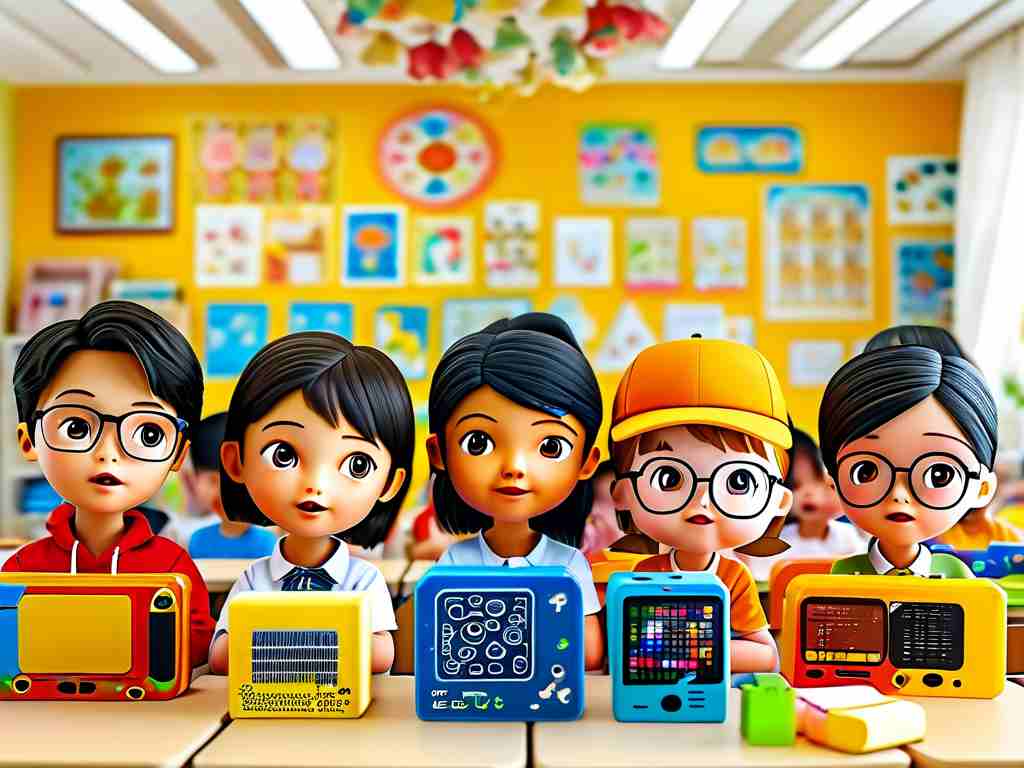In an era where technology shapes everyday life, introducing embedded development kits to elementary schools has emerged as a transformative educational strategy. These compact hardware-software platforms, once reserved for university labs, are now empowering children as young as 8 to explore coding, electronics, and problem-solving through hands-on experimentation.

Bridging Play and Programming
Modern embedded kits like micro:bit and Arduino Education packages have redefined tech education for young learners. Designed with colorful components and drag-and-drop coding interfaces, these tools turn abstract concepts into tangible projects. A fourth-grade class in Helsinki recently demonstrated this by creating weather stations using light sensors and LED displays. "It's like building digital LEGO," remarked 9-year-old participant Emma, highlighting how these kits make complex ideas approachable.
Teachers report measurable improvements in logical thinking and collaboration when students work on embedded projects. Unlike traditional computer classes focused solely on software, these kits require physical assembly and iterative testing. For instance, debugging a malfunctioning moisture sensor for a classroom plant monitor teaches persistence – students must check wiring connections, review code syntax, and validate sensor calibration.
Curriculum Integration Strategies
Successful implementation requires thoughtful planning. Forward-thinking schools are adopting a three-phase approach:
- Discovery Stage (Grades 1-2): Basic block-based programming using virtual simulators
- Exploration Phase (Grades 3-4): Simple hardware projects with pre-configured modules
- Creation Level (Grades 5-6): Customizable challenges using breadboards and sensors
A case study from Singapore's STEM Academy showed that students using embedded kits scored 28% higher in physics comprehension compared to peers using textbook-only methods. The kits' immediate feedback – seeing code directly control physical components – reinforces cause-effect understanding crucial for scientific literacy.
Overcoming Implementation Challenges
While benefits are clear, schools face practical hurdles. Cost remains a primary concern, though open-source alternatives like Raspberry Pi Pico (retailing under $10) are easing budget constraints. Teacher training presents another obstacle – only 15% of elementary educators feel confident teaching embedded systems according to a 2023 OECD survey. Successful districts address this through:
- Partnership programs with local tech companies
- Summer coding bootcamps for staff
- Peer-to-peer mentorship networks
Parental involvement also proves critical. Schools in California's Bay Area host "Family Maker Nights" where students demonstrate projects using kits like Adafruit Circuit Playground. These events build community support while demystifying technology for parents.
Future-Proofing Digital Literacy
As IoT devices proliferate, early exposure to embedded systems prepares students for a connected world. Educational researchers emphasize that foundational experiences with hardware programming foster computational thinking – the ability to break down complex problems into executable steps. When fifth graders in Tokyo programmed traffic light systems for model cities, they unknowingly practiced systems engineering principles applicable across disciplines.
Critics argue about age appropriateness, but modified tools address these concerns. Kits like Cubetto (for ages 3+) use tangible coding blocks instead of screens, while platforms like Microsoft MakeCode provide accessibility features for diverse learners. "It's not about creating engineers," explains Dr. Linda Chen, education technologist at MIT, "but nurturing a generation comfortable with shaping technology rather than just consuming it."
The Path Forward
Pioneering schools are already seeing long-term impacts. A six-year longitudinal study in Sweden tracked students who used embedded kits in elementary grades; by high school, 42% pursued advanced STEM courses versus 19% in the control group. As curriculum standards evolve to include physical computing, these kits will likely become as fundamental to education as calculators once were – not replacing traditional learning, but enriching it through practical application.
The ultimate success lies in maintaining the wonder of discovery. When a group of Florida third graders gasped as their first programmed robot arm lifted a marshmallow, they weren't just learning engineering – they were experiencing the joy of creation. Embedded development kits, when implemented with pedagogical care, transform classrooms into innovation playgrounds where every child can be an inventor.

